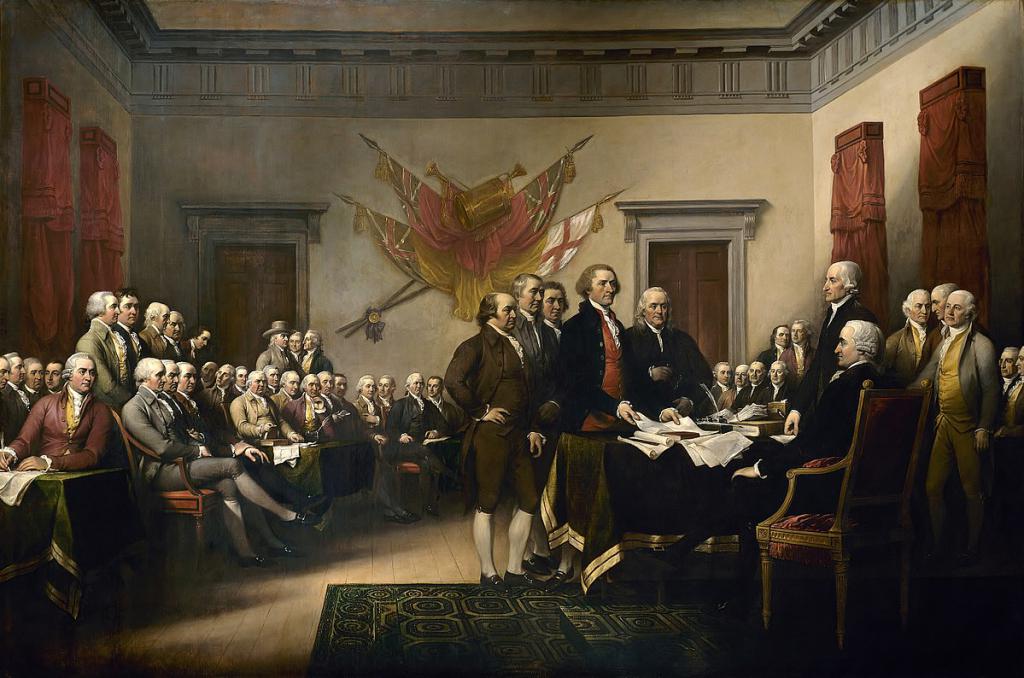The history of the famous stamp duty law needs to be studied by financiers and tax officials in the section “How to not do this”. In the second half of the 18th century, a whole bunch of short-sighted decisions of the British Parliament appeared regarding their American colonies. One of them was the Stamp Act, which turned into a powerful nail hammered into the coffin at the funeral of British colonial authority in America. Just a few years after the entry into force of the act, the American “Sons of Liberty” will throw English tea off the ships, arrange a Boston tea party and ... the war for independence will begin.
How it all started
The homeland of stamp duty was Holland. It was introduced in 1624 with purely fiscal goals: to align market stability indicators. It was quite sparing for taxpayers and had a tax-collection form. Money was levied for paperwork in the state format for a variety of reasons - transactions, complaints, fines, lawsuits, etc. Due to their effectiveness, stamp duties were introduced everywhere in Europe: in France, Prussia, Austria, etc.
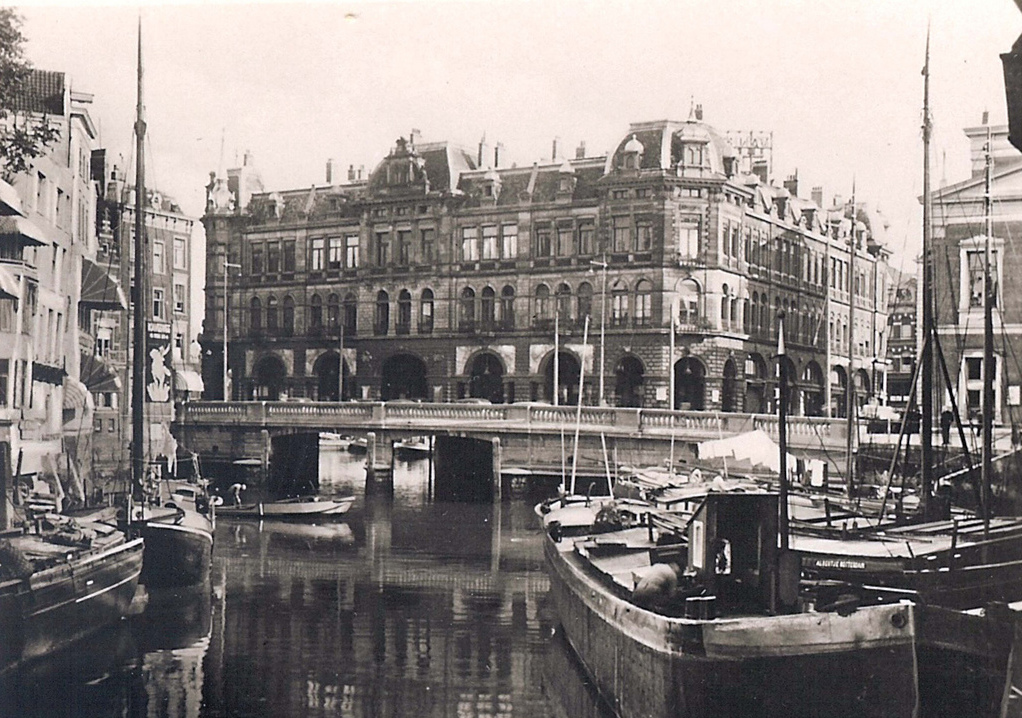
In Russia, the introduction of stamp duty began under Peter I. The collection mechanism was thought up cleverly: in all orderly huts to have for sale special paper under the state emblem. Stamp forms were in several samples, each of which was intended for different operations - from transaction records to petitions of the world. This paper also cost differently. If the petition or fortress was written on plain paper, they were charged a duty twice the cost of the stamp.
Anglo-Saxon version
In England itself, stamp duties began to be collected simultaneously with other European countries - in 1694. The life of this tax could be calm and measured in English. If not for a huge splinter in the body of the empire in the form of restless North American colonies.
It all started with a ban on paper money. This happened in 1764 - exactly one year before the date when the stamp duty was established. The ban on paper money has become another serious destabilizing factor. Farmers and small artisans, who so often turned out to be debtors, did not like him very much. And when the British Parliament, without a single attempt to coordinate with the American colonists, enacted the stamp duty act (it was often called the Stamp Act), the unrest acquired a systemic and extremely serious character.
Literally every step of the inhabitants of the colonies was taxed: from issuing a fresh newspaper to a school certificate or any kind of transaction. Even playing cards could no longer be issued without stamp duty.
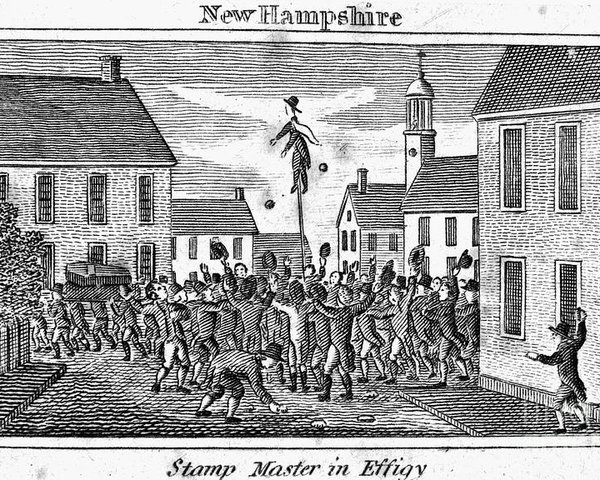
No need to guess for a long time who and why did not arrange stamp duty. In response, protests and unrest began. Stamps and home belongings of tax collectors began to burn on the streets. In front of their houses hung gallows with stuffed scarecrows. The collectors themselves were not hanged, but they got it beyond any measure: the favorite outcome of the protests was to cover with tar and dump the poor performers of British fiscal policy in the feathers.
1765 Congress and Sons of Liberty
Literally a year later, a special emergency congress was convened in New York, which put forward a completely legitimate demand to the British authorities: to introduce new taxes only by agreement with the colonists or their representatives. The problem has acquired a political character - we are talking about power in the colonies. Things got to the point that the home of the vice governor was destroyed in Boston.
Congress announced a complete boycott of English goods.For example, there were no silk dresses - clothes began to be worn from coarse home-made fabric, and tea was brewed on berry leaves.
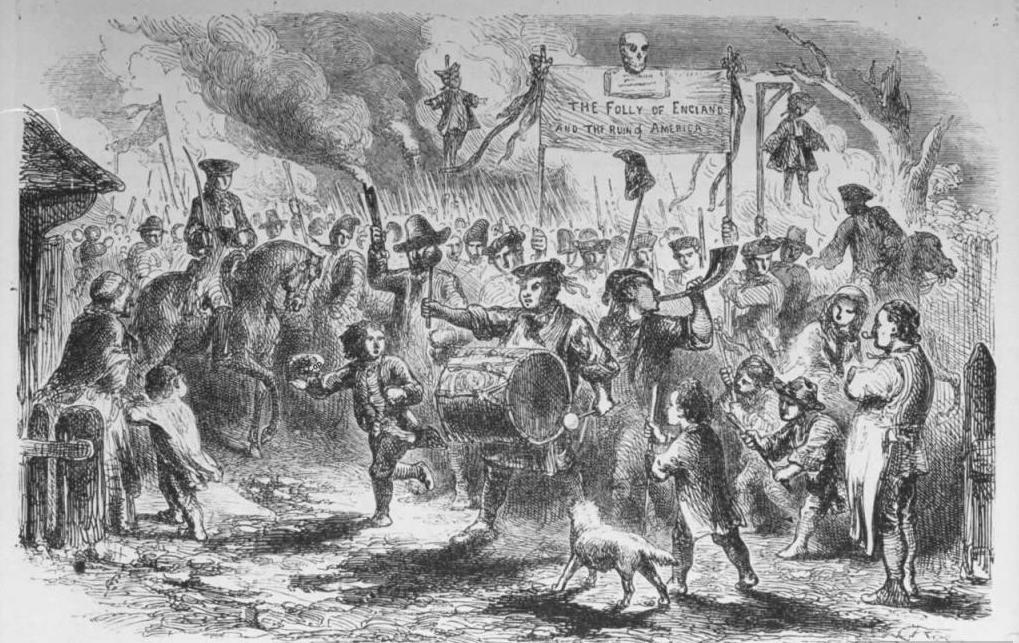
The conflict did not arise from scratch. The main offense and claim of the colonists was the violation by the British of their own constitution, according to which subjects of the British Empire were taxed only with the consent of their elected representatives. The adoption of the law on stamp duty occurred with violations, since no delegates from the North American colonists in parliament were mentioned. The inhabitants of the colonies did not have the opportunity to influence the tax system and other issues of an economic and political nature.
The boycott and demands for official London were not the only items on the Congress agenda. The most important point was the third attempt at a general unification of the colonies (the first two occurred in 1643 and 1754). The attempt failed, but something else happened: radical groups of farmers and artisans called “Sons of Freedom” began to appear in the country. They got a union starting in New York and Connecticut. This most dangerous political trend for the metropolis in London was again ignored ...
The House of Commons received a petition complaining from another group of people who were not satisfied with the stamp duty. These were British merchants, whose trade was in the balance of bankruptcy due to the boycott of English goods. Huge losses that overlap the meager income from tax revenues have become the main reason for the repeal of the law.
Glass, paper and tea ...
As a result, the empire retreated. Parliament annulled the Stamp Act two years after its introduction. But the shortsightedness of strategic decisions is a chronic and protracted disease; the British Parliament has been ill with it for a long time. Another exacerbation resulted in the issuance of a tax stamp substitute.
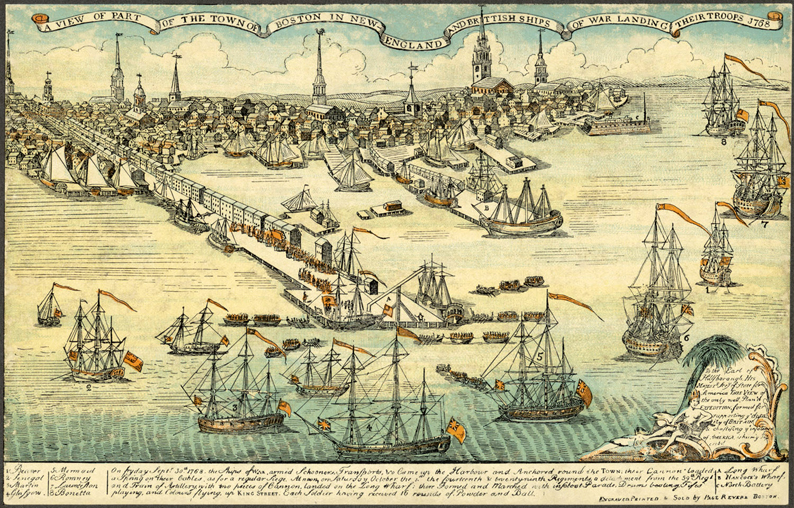
In return for the old act, the Americans slipped the new Townshend Act, which introduced new taxes on a specially agreed-upon range of manufactured goods - glass, paper, tea, and other components of British imports. The natural consequence of this step was the numerous uprisings in the colonies.
If, after the introduction of the Stamp Act, public unrest could be described as episodes of stuffed animals, tar and feathers, then after the Townshend Act, colonial uprisings acquired a systemic character, gradually turning into a real revolution.
It is noteworthy that to date there is no stamp duty in the United States. Its functions are performed by other legislative acts.
The role of Benjamin Franklin
Benjamin Franklin, being one of the best minds of the era and the most educated public figure, represented the North American colonies in London. From the very beginning, he advocated the political and economic independence of the colonies from the mother country.
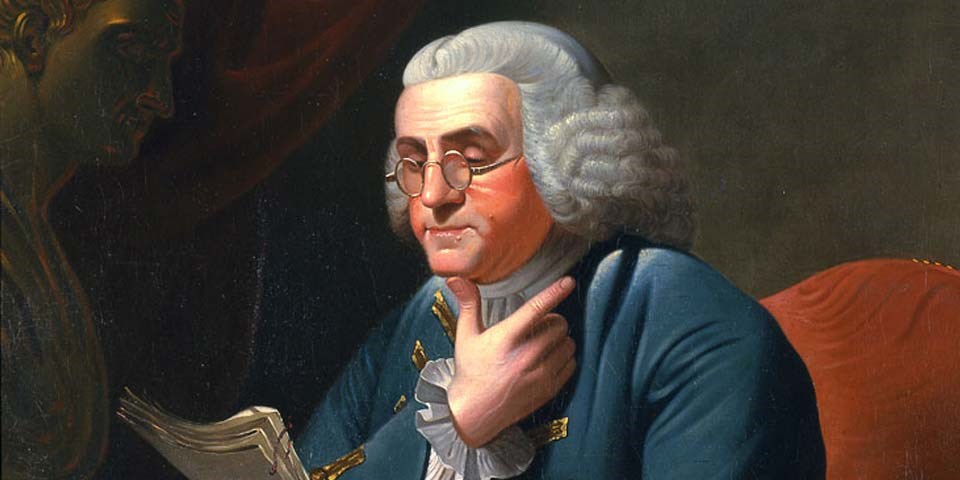
Benjamin Franklin was a prominent expert on domestic and international issues relating to all aspects of relations between the colonies of North America and other countries. The situation with the protests of the colonists about the Stamp Act really alarmed him. What the British government needed to do was to carefully analyze Franklin's statement after the introduction of the stamp duty, which he made during consultations in the House of Commons:
If troops are sent in order to force the law to be enforced, they will not find revolution there, but may be its cause.
Unfortunately, British politicians did not hear the warnings and did not heed the voice of reason: it was amazing short-sightedness. In response to Franklin’s warnings, authorities strengthened the colonial customs service with additional troops and higher import tariffs.
Exam for the British Parliament
To say that the decisions of the British authorities were the result of only shortsightedness and stupidity would be wrong.The fact is that new taxes appeared not just like that, but after the devastating Seven Years' War with the participation of almost all European colonial powers. The victory over France was given to Britain very expensively, the treasury was catastrophically empty. The reasons for the stamp duty, hard-coded in the North American colonies, were, among others, a huge public debt. Money was needed to protect the borders of the colonies from the raids of the American Indians.
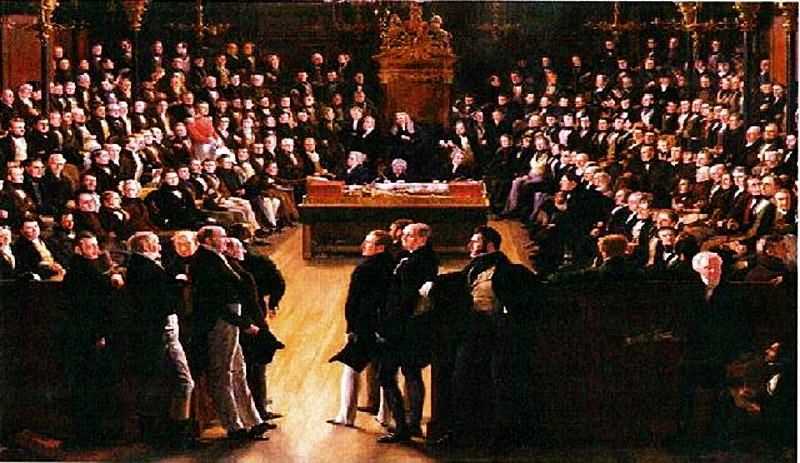
The art of effective political decisions consists in the ability to identify the main priorities in time. The choice between replenishing the post-war treasury and retaining power in the largest colonies now seems obvious. Not so, apparently, he was presented to parliamentarians and members of the Government of that time.
It was decided to eliminate the possibility of the influence of local planters on the royal colonial administration. Now the local governors began to receive a fixed salary from London, rather than the floating salary rate, which was approved annually on the ground.
In response, the local Massachusetts assembly sent out a protest letter to all the colonies. London, through its local governor, demanded that the letter be withdrawn, threatening to dissolve the assembly. When the colonists refused, the assembly was declared dissolved and incompetent. But she continued to sit and work.
The metropolis sent two regiments to Boston, which led to the instant mobilization and arming of the colonists. Thus, a new parallel power arose in Boston - the city assembly.
It was no longer a bell, but a powerful bell that was not heard again in London. Before the Boston tea party and the start of the War of Independence, there were only five years left ...
Duty or tax?
The difference between the tax and the duty is as follows: tax is a periodic payment, for example, an annual real estate tax. A duty is a one-time fee for something, for example, a state duty for customs clearance of goods.
The name "stamp duty" is closer to the duty. This is understandable, stamp duty is most often made in the form of acquisition of stamps, excise taxes or stamp paper (Russian version of fees).
Such payments have a dual character. On the one hand, this is a fee in the form of fees for public services. On the other hand, it is more like a tax on circulation or transfer of values (tax on the purchase of real estate).
But the main feature of the stamp duty as a whole is its “documentary”, that is, the mandatory presence of a document. The fee is paid only if there are tangible securities that can be issued or transferred.
Stamp Act in Russia

Having begun its existence in the 18th century with the filing of Peter I, stamp payments to the state treasury safely arrived right up to the communist regime. In the USSR, taxes were withdrawn in the form of a single duty, so a separate stamp duty ceased to be necessary, it was canceled.
Since 1991, this tax has been re-existing and is one of the well-collected and sustainable taxes. Until recently, each participant in a transaction with securities, licensing of exchange activity, etc., was taxed by him. Now he has been replaced by a single tax on transactions with securities.
Actually fluffy and white
Stamp American colonial history has nothing to do with the current life of this tax. It is quite civilized and is an important part of modern local level taxation in the UK. Firstly, this fee is paid when purchasing various securities as investment instruments. Secondly, not a single deal to buy real estate or land in the kingdom is complete without it.
Local governments in counties and counties are mainly supported by property taxes, including commercial taxes.The word “commercial” is the key in this case, because since 2014 “Stamp tax on land tax” has been calculated on a progressive scale. These tax changes miraculously affect the budget of local governments (especially in combination with rising taxes on parking fees).
How the English stamp act works today
Now the stamp tax rate depends on the type and value of real estate or land. The percentage of collection may increase along with the purchase price at a standard or increased rate. If the house you are buying is your first and only place to live, the rate is standard. If real estate is an investment of any kind, the tax rate will be higher. The first unhappy with the updated version were the agencies for the sale of English real estate.
For example, if you do not have a home and you buy an old house in Yorkshire at a price of £ 1,200,000, then you have to pay a decent amount of £ 50,000 as stamp duty. We consider:
- for part of the cost of £ 125,000 we do not pay anything;
- for a "plot" of the amount from £ 125,000 to £ 250,000 we pay 2%;
- for everything above £ 250,000, we pay 5%.
The calculations are as follows: £ 1,200,000 - £ 250,000 = £ 950,000 x 0.05 = £ 47,500 + £ 2,500 = £ 50,000.
If you decide to purchase the same house for your summer vacation, and constantly live in a London apartment, you will have to pay an additional 3% of the total cost, which will total £ 86,000.
If anyone is happy and applauds the updated stamp tax on real estate transactions, these are the local governments of England, Wales and Northern Ireland. A very good ending for a long-suffering act of a very advanced age. The prosperous end of an interesting story that began more than two hundred and fifty years ago.
